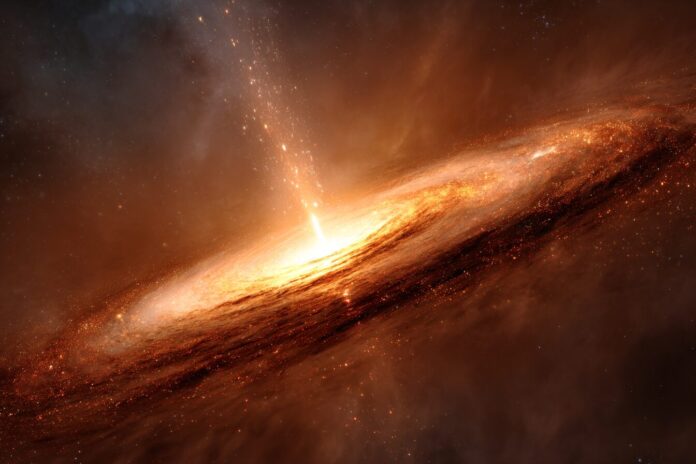The Dawn of the Universe’s Most Extreme Lightshows
For decades, astronomers have marveled at powerful cosmic events, but recent discoveries have redefined our understanding of the universe’s most violent outbursts. When supermassive black holes shred massive stars—those at least three times the mass of our sun—they unleash bursts of energy that are truly unprecedented. These events have been categorized as extreme nuclear transients (ENTs), marking a new era in cosmic explosion studies. Most importantly, this breakthrough not only challenges previous notions of stellar death but also offers a fresh perspective on the role these colossal events play in galactic evolution [1][2][5].
Because these highly energetic outbursts light up the dark recesses of the universe, they serve as natural beacons in the cosmos. Therefore, scientists are increasingly reliant on them to trace hidden supermassive black holes. In addition, each detected flare provides critical insight into environments that were previously shrouded in mystery, as detailed in articles from Tech Explorist and Discover Magazine. Besides that, these lightshows are a remarkable demonstration of the universe’s dynamic and ever-changing nature.
What are Extreme Nuclear Transients?
Extreme nuclear transients are not your typical supernovae. Instead, picture a star many times heavier than our sun drawn irresistibly close to a dormant black hole. In seconds, tidal forces tear the star apart, and a dazzling flare erupts that can outshine entire galaxies. This burst radiates energy at levels ten times greater than conventional stellar explosions, offering a spectacle of light that endures for months, and sometimes even years [1][2][5].
Because these phenomena truly defy ordinary cosmic events, their study provides fresh insights into the behavior of matter under extreme gravitational influences. Most importantly, the prolonged brightness of these events—climbing for over 100 days to peak luminosity and lingering for an additional 150 days or more—allows astronomers to analyze them in detail, thereby refining our understanding of black hole physics.
How Do These Megastar Catastrophes Unfold?
The catastrophic encounter begins when a wandering massive star gets trapped by the gravitational pull of a black hole. Immediately, tidal forces kick in, ripping the star apart. Consequently, the resulting debris forms an accretion disk that heats up dramatically and emits intense X-ray, ultraviolet, and optical light. Because each step in this process is marked by a smooth, long-lived light curve, astronomers have a clear signature to identify these ENTs [1][2].
Most importantly, the chaotic interaction is not confined to the star alone. The engulfing black hole converts the star’s material into vast amounts of energy, releasing high-energy radiation that permeates the galaxy’s central regions. Therefore, this intense burst of energy not only reshapes its immediate surroundings but also has the potential to trigger additional astrophysical phenomena within the galaxy, as noted in NASA’s extensive datasets from NASA.
Landmark Observations
Landmark observations of extreme nuclear transients have been made using some of the world’s most advanced telescopes and observatories. NASA’s Neil Gehrels Swift Observatory has been instrumental in differentiating these cosmic flares from conventional supernovae by monitoring their unique light curves. Because these observations reveal the distinct energy patterns of black hole activity, they have significantly advanced our understanding of these extraordinary events [1][2].
In addition, collaborative efforts among international observatories have yielded vital data. For example, the European Space Agency’s Gaia mission captured two early flares in 2016 and 2018, which were later complemented by findings from the Zwicky Transient Facility, dubbed ‘Barbie’ in 2020. This teamwork, confirmed by observations from NASA’s WISE/NEOWISE mission, emphasizes the global commitment to understanding these phenomena, as prominently reported by Space.com and Live Science.
Why Do Extreme Nuclear Transients Matter?
These rare cosmic explosions are pivotal, because they serve as a direct probe into the hidden corners of distant galaxies. Most importantly, the dramatic energy released by ENTs illuminates regions where supermassive black holes typically remain unseen. Therefore, these events empower astronomers to study the central mechanics of galaxies, which were hitherto inaccessible [1].
Besides that, the tremendous energy output of these events may influence star formation and the evolution of galaxies. Because the radiation from these transients floods the surrounding space, it can trigger or suppress nearby stellar births, thereby altering a galaxy’s evolutionary path over cosmic timescales. This interconnection between black hole activity and galactic evolution provides a compelling reason for future studies, as highlighted in works from leading astrophysical research institutions.
A Glimpse into the Future of Cosmic Exploration
With rapid advancements in telescope sensitivity and detection algorithms, the future holds exciting possibilities for further exploration of extreme nuclear transients. Most importantly, each new discovery propels our understanding of black hole growth and stellar death mechanisms to new heights. Furthermore, by analyzing these long-duration light curves, astronomers can test theoretical models and refine predictions about cosmic evolution.
Because the universe is vast and full of surprises, it is only a matter of time until more such phenomena are discovered. Therefore, the ongoing research into these cataclysmic events promises not only to rewrite textbooks but also to deepen our appreciation for the dynamic processes governing galaxies. As technological innovations continue to advance, the horizon of cosmic exploration expands, offering new insights into the grand design of our universe.
References:
- Supermassive black holes feasting on massive stars – Tech Explorist
- Astronomers discover most powerful cosmic explosions since the Big Bang – Space.com
- Astronomers discover most powerful cosmic explosions since the Big Bang – Live Science
- 3 Black Holes Caught Eating Massive Stars in NASA Data – NASA
- Black Hole Feast Sparks Brightest Cosmic Explosion Ever Recorded – Discover Magazine



